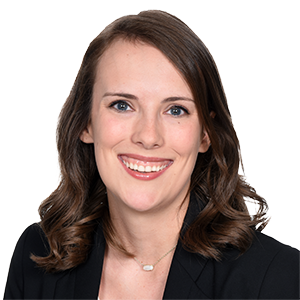To manage the economic impacts of the COVID-19 pandemic, the US government has enacted new legislation to provide emergency funding for businesses. As part of the stimulus legislation, the Coronavirus Aid, Relief and Economic Security Act (the “CARES Act”) expands existing Small Business Administration’s (“Administrator”) loan programs to provide:
- Paycheck Protection Loans (“PPL”), including loan forgiveness options
- Economic Injury Disaster Loans (“EIDL”), including Emergency Grants with forgiveness options
The following checklists provide an overview of the eligibility requirements and terms for PPLs, EIDLs, and Emergency Grants under the CARES Act and the Small Business Act (“SBA”). Businesses should assess any existing credit arrangements (including loans, lines of credit, credit agreements, etc.) to confirm that they are not prohibited from incurring additional debt and obtaining loans under the CARES Act and SBA.
The Secretary of the Treasury stated in an interview on March 29, 2020 that the SBA intends to start the emergency loan program on Friday, April 3, 2020.
This document is current through the enactment of the CARES Act on March 27, 2020 and includes the Interim Final Rule on the Paycheck Protection Program (“PPP”) issued by the US Treasury on April 2, 2020 and the Interim Final Rule issued by the Small Business Administration on April 3, 2020 for the Affiliate Rules for the PPP.
The Interim Final Rule on the PPP issued by the Treasury on April 2, 2020 provides additional guidance on the eligibility application process for PPLs. This guidance clarifies (1) what costs may be included in payroll costs, including the exclusion of compensation for independent contractors, (2) a modified interest rate, (3) the new loan maturity date, and (4) a formula how loan forgiveness will be calculated.
The Interim Final Rule on the Affiliate Rules for the PPP issued by the Small Business Administration on April 3, 2020 indicates that affiliation for the PPP will be analyzed under 13 CFR 121.301, which utilizes a broad, control-based facts and circumstances analysis.
Paycheck Protection Loan program
The PPL program created under the CARES Act will operate through Section 7(a) of the SBA. The CARES Act expanded the definition of a small business under the SBA and increased the loan amounts available for each qualifying business. The PPLs can aid small businesses in covering employee salaries, other payroll costs, mortgage interest, rent, utilities, and interest on other debt obligations while enduring the economic impact of COVID-19. Congress has allocated $349 billion to fund these loans
Covered period under the PPL (“PPL Covered period”)
- February 15, 2020 through December 31, 2020
- The last day to apply for a loan is June 30, 2020
Eligibility
- Business must have been in operation as of February 15, 2020 and had employees to whom the business paid salaries or paid as independent contractors
- Businesses with 500 or fewer employees (including affiliates)1
- Businesses which meet the applicable SBA size regulations for the specific industry (including affiliates)
- Nonprofit organizations, veterans organizations or Tribal business concerns with 500 or fewer employees (or the applicable SBA size regulations)
- Individuals who operate under a sole proprietorship or as an independent contractor
- Businesses in the hospitality industry (industry codes that start with 72) that employ no more than 500 employees per physical location (the affiliation rules are also waived for this industry, so affiliate employees and revenue are not considered)
- Business must operate primarily within the United States or make a significant contribution to the US economy through payment of taxes or use of American products, materials or labor
- Business (including affiliates) with (i) maximum tangible net worth of not more than $15 million and (ii) average net income after Federal income taxes (excl. carry-over losses) of the applicant for the 2 full fiscal years before the date of the application of not more than $5 million.
Affiliate under SBA
- The Interim Rule published by the SBA confirms that the affiliate analysis for the PPLs will be conducted according to 13 CFR 121.301, which includes the following factors:
- The affiliate definition under the SBA is broad and determined on a case-by-case basis. Concerns and entities are affiliates of each other when one controls or has the power to control the other, or a third party or parties controls or has the power to control both. It does not matter whether control is exercised, so long as the power to control exists.
- The SBA considers factors such as ownership, management, previous relationships with or ties to another concern, and contractual relationships, in determining whether affiliation exists.
- Control may be affirmative or negative. Negative control includes, but is not limited to, instances where a minority shareholder has the ability, under the concern's charter, bylaws, or shareholder's agreement, to prevent a quorum or otherwise block action by the board of directors or shareholders.
- Affiliation may be found where an individual, concern or entity exercises control indirectly through a third part
- In determining whether affiliation exists, the SBA will consider the totality of the circumstances, and may find affiliation even though no single factor is sufficient to constitute affiliation.
Maximum loan amount
The lesser of:
- The sum of:
- the average total monthly payments for payroll costs2 for the 12 months prior to the loan date multiplied by 2.5 and
- the outstanding amount of an EIDL made during the period beginning on January 31, 2020 and ending December 31, 2020 (the “EIDL Covered Period”) and being refinanced under the PPL;
- and
Payroll definition
- Salary, wages, commission, cash tips and similar compensation
- Payment for vacation, parental, family, medical, or sick leave (excluding qualified family and sick leave for which applicant may receive a credit under the Families First Coronavirus Response Act)
- Allowances for dismissal or separation
- Payments to provide group health care benefits (including insurance premiums)
- Payments for retirement benefits
- Payment of state or local taxes assessed on employee compensation
Guarantee
- The Administrator will guarantee the full loan amount and no personal guarantee is required
Allowable uses of proceeds
- Payroll costs
- Costs related to the continuation of group healthcare benefits during periods of paid sick, medical, or family leave, and insurance premiums
- Employee salaries, commissions, or similar compensations
- Payments of interest on any mortgage obligation
- Rent
- Utilities
- Interest on other debt obligations incurred prior to February 15, 2020
Maximum term
- Maximum maturity of two years
Interest rate
Deferment
- Lenders are required to defer payments of principal, interest, and fees for six months.
Lender eligibility
- Lenders currently qualified to participate in the SBA §7(a) loan program may elect to offer PPLs.
- Authority to make PPLs may be extended to additional lenders by the Administrator and the Secretary of the Treasury; however, this does not give the additional lenders the authority to make traditional SBA §7(a) loans.
- Specific requirements for becoming an additional lender are not outlined in the CARES Act.
Application process
- The application process starts with a local lender, working under the Administrator’s guidelines, local lenders can be found here.
- Documents to be submitted to apply for a PPL are:
- Paycheck Protection Loan Application
- Business Financial Statements:3
- Current Profit and Loss (P&L) Statement not older than 180 days at date of application demonstrating the borrower’s P&L for the last 12 months; and
- Contact information of owners and affiliates
- Business certificate, license, or the corporate seal on the application form
- Loan application history
- Payroll expense verification forms
- Income tax returns for previous three years
- Business overview, history, and why business needs assistance
- Copy of your business lease
Loan forgiveness
- For eight weeks from the funding date of the PPL (“Covered Period”) applicants can use the PPL loan proceeds to pay:
- Payroll payments
- Payments of interest on any mortgage obligation (excl. any prepayment of or payment of principal on a mortgage obligation)
- Rent (incl. rent under a lease agreement in place before Feb. 15, 2020)
- Utilities (only for distribution of electricity, gas, water, transportation, telephone, or internet access in place before Feb. 15, 2020)
- Reduction: Loan forgiveness may be proportionally reduced if the applicant reduces employees’ salaries by more than 25% of the employee’s last full calendar quarter during the Covered Period;
- Exemption: If the applicant rehires workforce or discontinues reduced salary payments before June 30, 2020 loan forgiveness will not be reduced.
- Application: Applicants seeking PPL forgiveness must submit an application to the authorized lender. The application must include:
- Documents showing number of full time equivalent employees on payroll and pay rates for period from Feb. 15, 2020 to June 30, 2020
- Documents can include cancelled checks, payment receipts, transcripts of accounts, or other documents, verifying payments on mortgage and/or lease obligations and utility payments
- Certification by representative regarding the documentation provided and
- Any other document the Administrator determines as necessary
- At least 75 percent of the forgivable loan portion must be to cover payroll costs. Not more than 25 percent of the forgiven amount may be for non-payroll costs
Interaction with economic Injury Disaster Loans
- Applicants may not apply for different loan programs to cover the same costs.
- EIDLs can be refinanced into a PPL if obtained after January 31, 2020 for COVID-19 related losses.
- If applicant received an EIDL from January 31, 2020 through April 3, 2020, the applicant can also apply for a PPL. If the EIDL was not used for payroll costs, it does not affect the applicant’s PPL eligibility; however, if the EIDL was used for payroll costs, the EIDL must be refinanced as part of the PPL.
SBA’s Disaster Loan Program
Section 1110 of the CARES Act on “Emergency EIDL Grants” expands the eligibility and application process for an EIDL under Section 7(b)(2) of the SBA . All US States, Territories, and Tribes have been declared disaster areas following the economic impact of the COVID-19 pandemic, enabling small business owners to apply to the Administrator for:
- An EIDL and/or
- An Emergency Grant.
An EIDL and Emergency Grant can be used for paying fixed debts such as rents or mortgages, payrolls, accounts payable, and bills that would have been paid had the disaster not occurred. Congress has allocated $10 billion to fund Emergency Grants, but no additional funding is made available for EIDLs.
Below is a checklist that outlines the expanded grant structure for EIDL and Emergency EIDL Grants applications under the CARES Act.
EIDL covered period
- January 31, 2020 through December 31, 2020
Maximum EIDL amount
Expanded eligibility requirements
The CARES Act expands the EIDL eligibility requirements – during the Covered Period – for small businesses with not more than 500 employees, that were in operation as of January 31, 2020:
- Business (including affiliates) must have been in operation as of February 15, 2020 and had employees whom the business paid salaries or paid independent contractors
- Businesses which meet the applicable SBA size regulations for the specific industry (including affiliates)
- An Employee Stock Ownership Plan (“ESOP”)
- A tribal small business concern
- A small agricultural cooperative
- A sole proprietorship with or without employees, or an independent contractor
- A private nonprofit organization
Application checklist
- Applicants can apply to an EIDL and submit the requested information online until September 30, 2020. The SBA estimates that the time to complete the EIDL application is approximately 2 hours and 10 minutes.
- To apply for an EIDL applicants must provide:
- The Administrator may also request:
- Monthly sales figures (SBA Form 1368)
- Copy and schedules of most recent Federal income tax return for principals, general partners or managing member, and affiliates
- Year-to-date profit-and-loss statement
Approval criteria
- An EIDL can be approved:
- Based solely on the applicant’s credit score without requesting a tax return transcript
- Using any “alternative appropriate methods the Administrator may choose to determine the applicant’s ability to repay”4
Waivers for EIDLs under the CARES Act
- Personal guarantees on advances and loans up to $200,000
- The one-year period requirement for an applicant to be in business before a disaster, unless the business was not operating before January 31, 2020
- The “credit elsewhere” requirement, which requires applicants to be unable to obtain a credit elsewhere
Emergency Grant
- When applying for an EIDL an applicant may request an Emergency Grant (or advance) from the Administrator.
Maximum Emergency Grant Amount and application period
- Amount: $10,000
- Period: Emergency Grants are available through December 31, 2020
Distribution of Emergency Grant
- Distribution occurs within three days after Administrator’s receipt of the application.
Certification required
- To receive an Emergency Grant, the applicant will have to submit a self-certification under penalty of perjury that the applicant is eligible for an EIDL.
Allowable uses of the Emergency Grant Advance
- Providing paid sick leave for employees unable to work due to the direct effect of COVID-19
- Maintaining payroll for employees due to business disruption or substantial slowdown
- Paying for materials at an increased cost due to interrupted supply chains
- Paying rent or mortgage
- Repaying obligations following losses of revenue
Emergency Grant and Loan Forgiveness and Repayment
- Applicants do not have to repay Emergency Grants, even if the application for an EIDL is denied.
- Applicants who receive both an Emergency Grant and a PPL that is forgiven will have the amount forgiven under the Emergency Grant be reduced by the PPL forgiveness amount.
This checklist is based on information available as of April 9, 2020. It is intended to provide information on developments in the law only. It is not legal advice and does not constitute an opinion of Norton Rose Fulbright US LLP. These terms can be adjusted at the discretion of the Small Business Administration and the Secretary of Treasury.
A special thanks to law clerk Philippine Dumoulin, who works under the direct supervision of Julia Rix, for her assistance in preparing this content.








